Reconstruction of the
2007 Sugar Hill formation |
|
| 1. |

| Draw a circle. Draw and extend the horizontal and vertical centerlines.
|
|
| 2. |

| Create a hexagram (regular six-pointed star), by constructing two circumscribed equilateral triangles of circle 1, one pointing to the left, one pointing to the right.
|
|
| 3. |
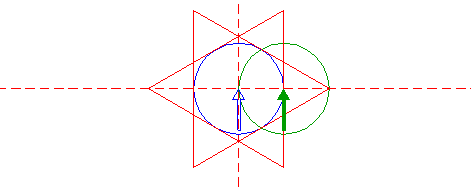
| Copy circle 1 to its righthand intersection with the horizontal centerline.
|
|
| 4. |
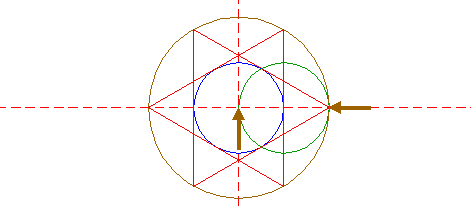
| Construct a circle concentric to circle 1, tangent to circle 3 at the righthand side.
|
|
| 5. |
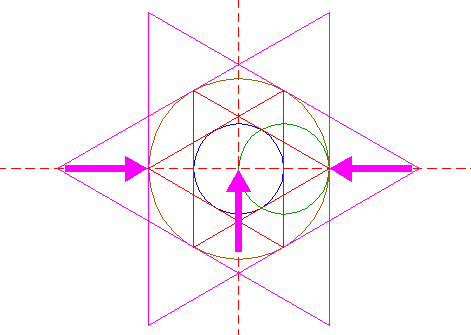
| Construct the circumscribed hexagram of circle 4, in the same way as hexagram 2.
|
|
| 6. |
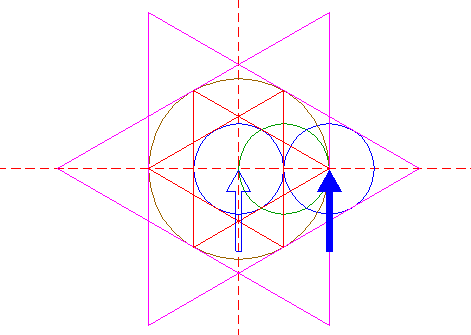
| Copy circle 1 to the righthand intersection of circle 3 and the horizontal centerline.
|
|
| 7. |
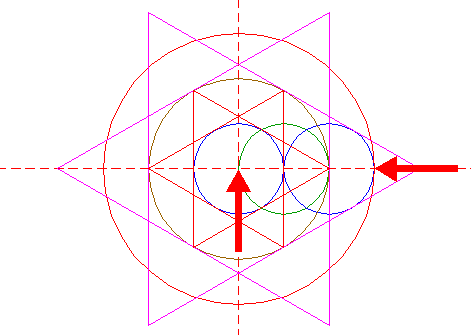
| Construct a circle concentric to circle 1, tangent to circle 6 at the righthand side.
|
|
| 8. |
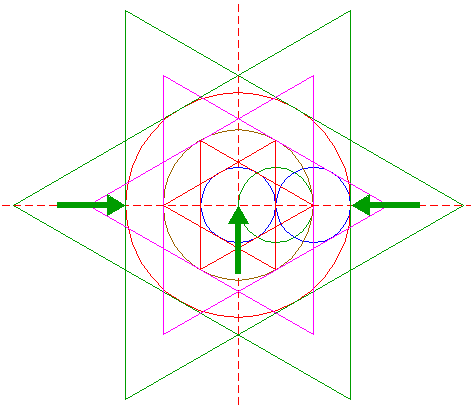
| Construct the circumscribed hexagram of circle 7, pointing to the right.
|
|
| 9. |
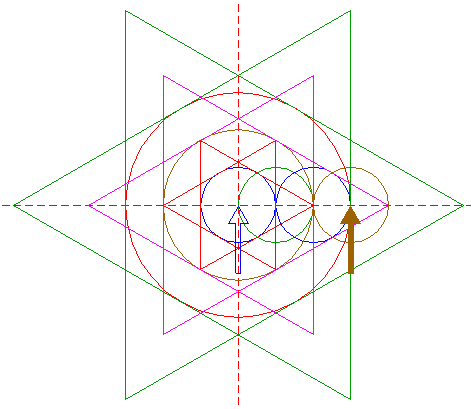
| Copy circle 1 to the righthand intersection of circle 6 and the horizontal centerline.
|
|
| 10. |

| Construct a circle concentric to circle 1, tangent to circle 9 at the righthand side.
|
|
| 11. |
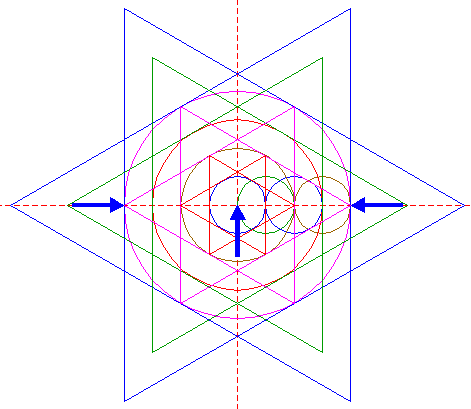
| Construct the circumscribed hexagram of circle 10, pointing to the right.
|
|
| 12. |
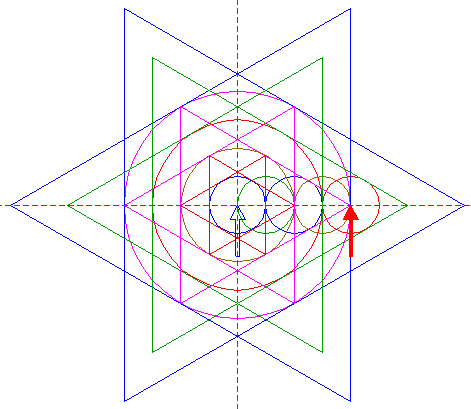
| Copy circle 1 to the righthand intersection of circle 9 and the horizontal centerline.
|
|
| 13. |
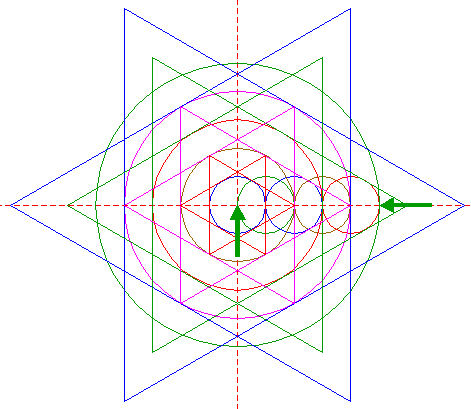
| Construct a circle concentric to circle 1, tangent to circle 12 at the righthand side.
|
|
| 14. |

| Construct the circumscribed hexagon (regular six-sided polygon) of circle 13, pointing up.
|
|
| 15. |

| Extend all sides of hexagram 2 (all sides of both triangles) in both directions, up to hexagon 14.
|
|
| 16. |

| Extend all sides of hexagram 5 in both directions, up to hexagon 14.
|
|
| 17. |
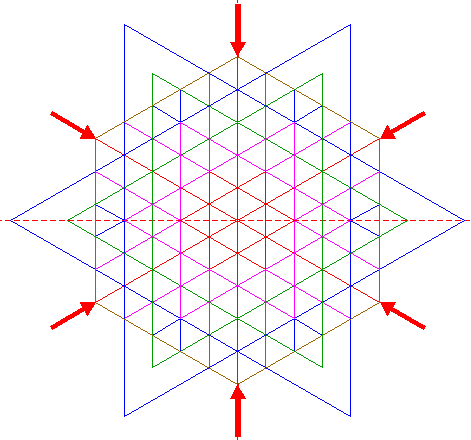
| Draw the three diagonals through the center of hexagon 14.
|
|
| 18. |
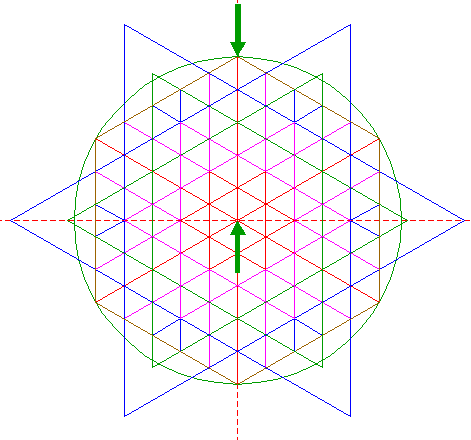
| Construct the circumscribed circle of hexagon 14.
|
|
| 19. |
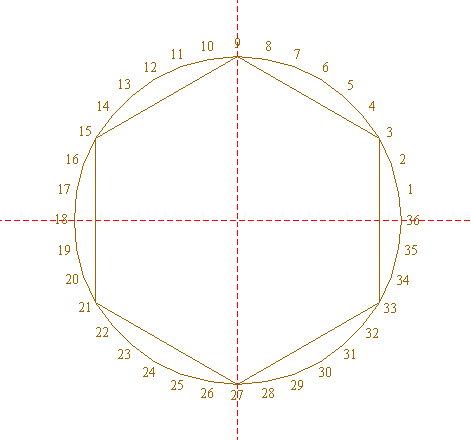
| (For clarity, the results of previous steps are removed temporarily).
Construct the inscribed regular 36-sided polygon of circle 18, pointing to the right. Number the angular points counterclockwise, starting at the rightmost one just above the horizontal centerline, as shown.
|
|
| 20. |
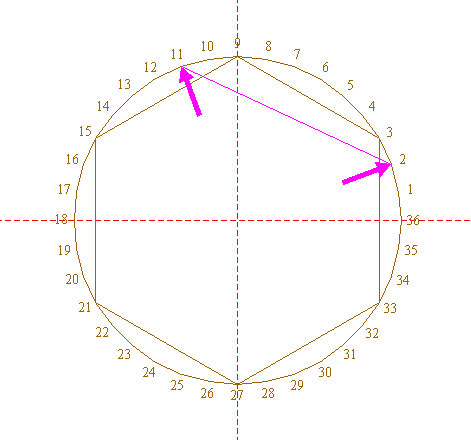
| Draw the diagonal of polygon 19, connecting angular points nrs. 2 and 11.
|
|
| 21. |

| Extend diagonal 20 to the right, up to the horizontal centerline.
|
|
| 22. |
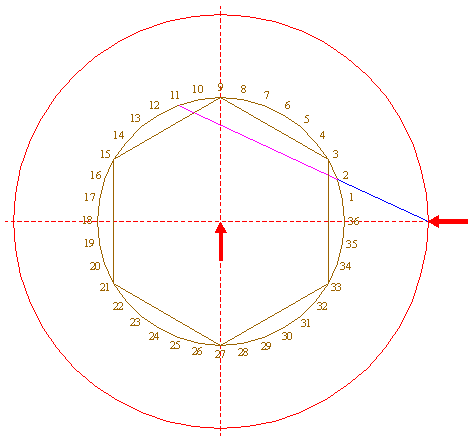
| Construct a circle concentric to circle 1, passing through the intersection of line 21 and the horizontal centerline.
|
|
| 23. |
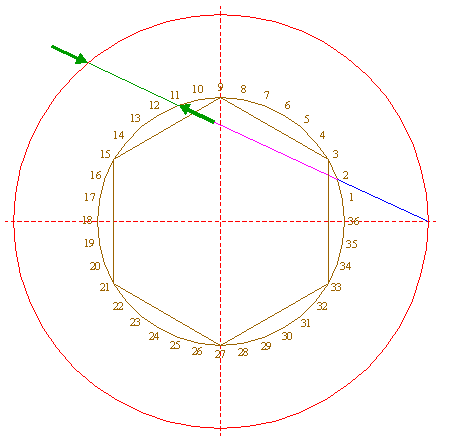
| Extend diagonal 20 to the left, up to circle 22.
|
|
| 24. |
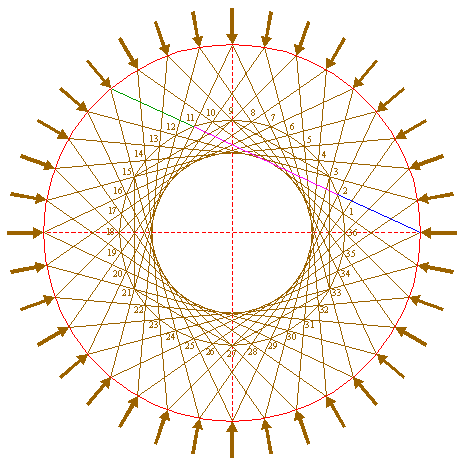
| Repeat steps 20, 21 and 23 35 times, for all other corresponding pairs of angular points of polygon 19 (nine angular points apart), as shown.
|
|
| 25. |

| Construct three circles concentric to circle 1, through the second, third and fourth set (from outside) of mutual intersections of lines 24, as shown.
|
|
| 26. |
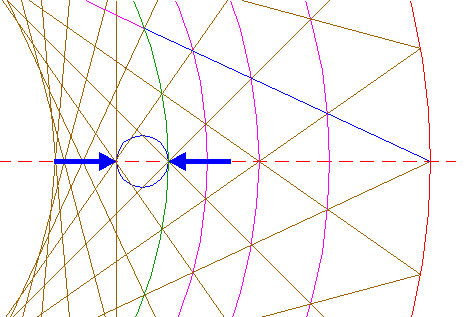
| Construct a "two-points" circle, defined by the end-points of a centerline, with the points at the righthand intersections of hexagon 14 and circle 18 with the horizontal centerline.
|
|
| 27. |
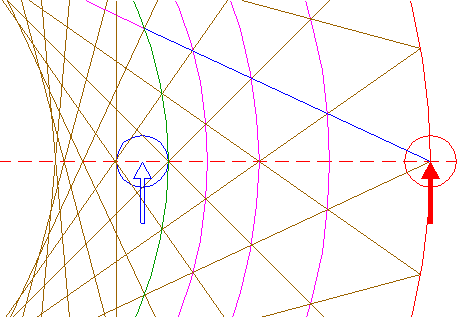
| Copy circle 26 to the righthand intersection of circle 22 and the horizontal centerline.
|
|
| 28. |
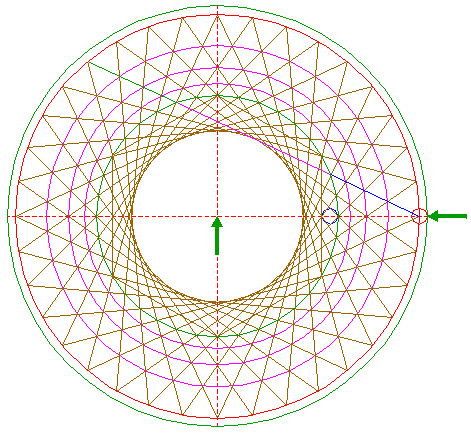
| Construct a circle concentric to circle 1, tangent to circle 27 at the righthand side.
|
|
| 29. |
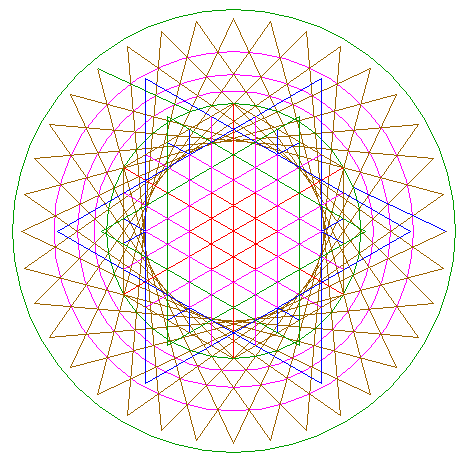
| Triangles (hexagrams) 2, 5, 8 and 11, hexagon 14, lines 15, 16, 17, 21, 23 and 24, and circles 18, 25 and 28 are used for the final reconstruction.
|
|
| 30. |
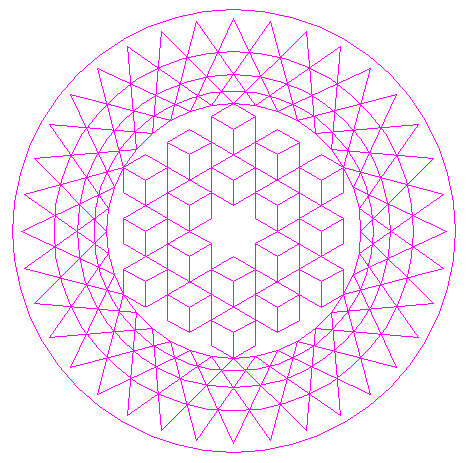
| Remove all redundant parts, not visible in the formation itself.
|
|
| 31. |
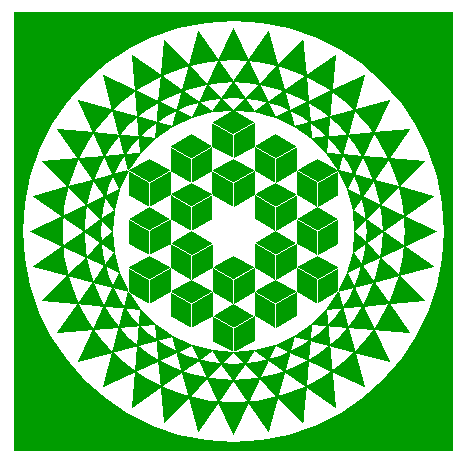
| Colour all areas with standing...
|
|
| 32. |
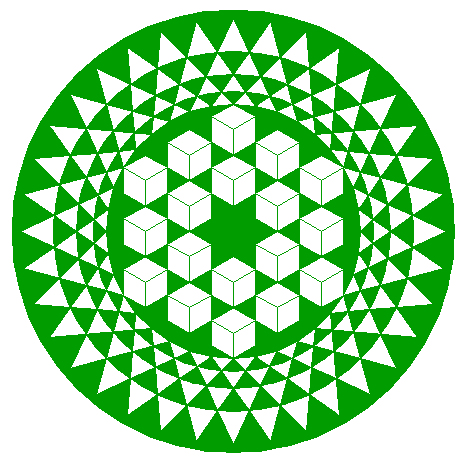
| ...or with flattened crop, and finish the reconstruction of the 2007 Sugar Hill formation.
|
|
| 33. |
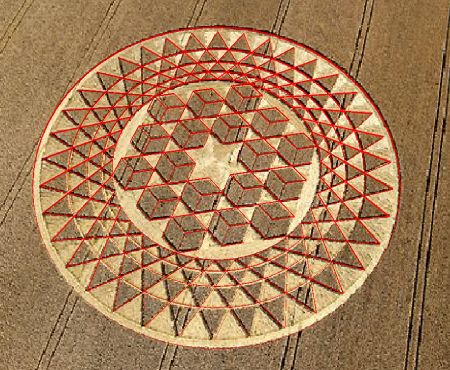
| The final result, matched with the aerial image.
|

































